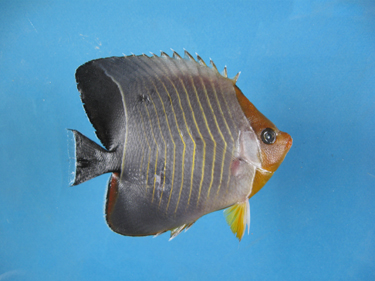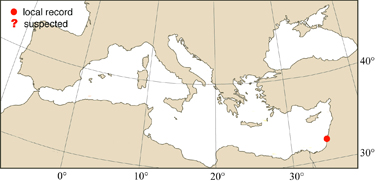
|
Relevant synonyms
Misidentification
Meristic formula
|
|
| photo : Daniel Golani |
|
SHORT
DESCRIPTION
color : the anterior part of the head from the dorsal fin origin, behind the eye to pelvic fin origin brownish-orange. Most of the body bluish-grey with narrow chevron-shaped vertical yellow lines. Posterior part of dorsal fin, caudal peduncle and most of the caudal fin are black. Posterior edge of caudal fin light blue to white.
size : common 8-12 cm (max. 15 cm). |
DISTINGUISHING CHARACTERISTICS
BIOLOGY / ECOLOGY
habitat : among coral reefs, rocky and open habitats at depths down to 40 m. |
|
1st
MEDITERRANEAN RECORD
|

|
|
DISTRIBUTION
|
ESTABLISHMENT SUCCESS
speculated reasons for success :
|
|
|
MODE OF
INTRODUCTION |
IMPORTANCE TO
HUMANS |
|
KEY
REFERENCES
|
|